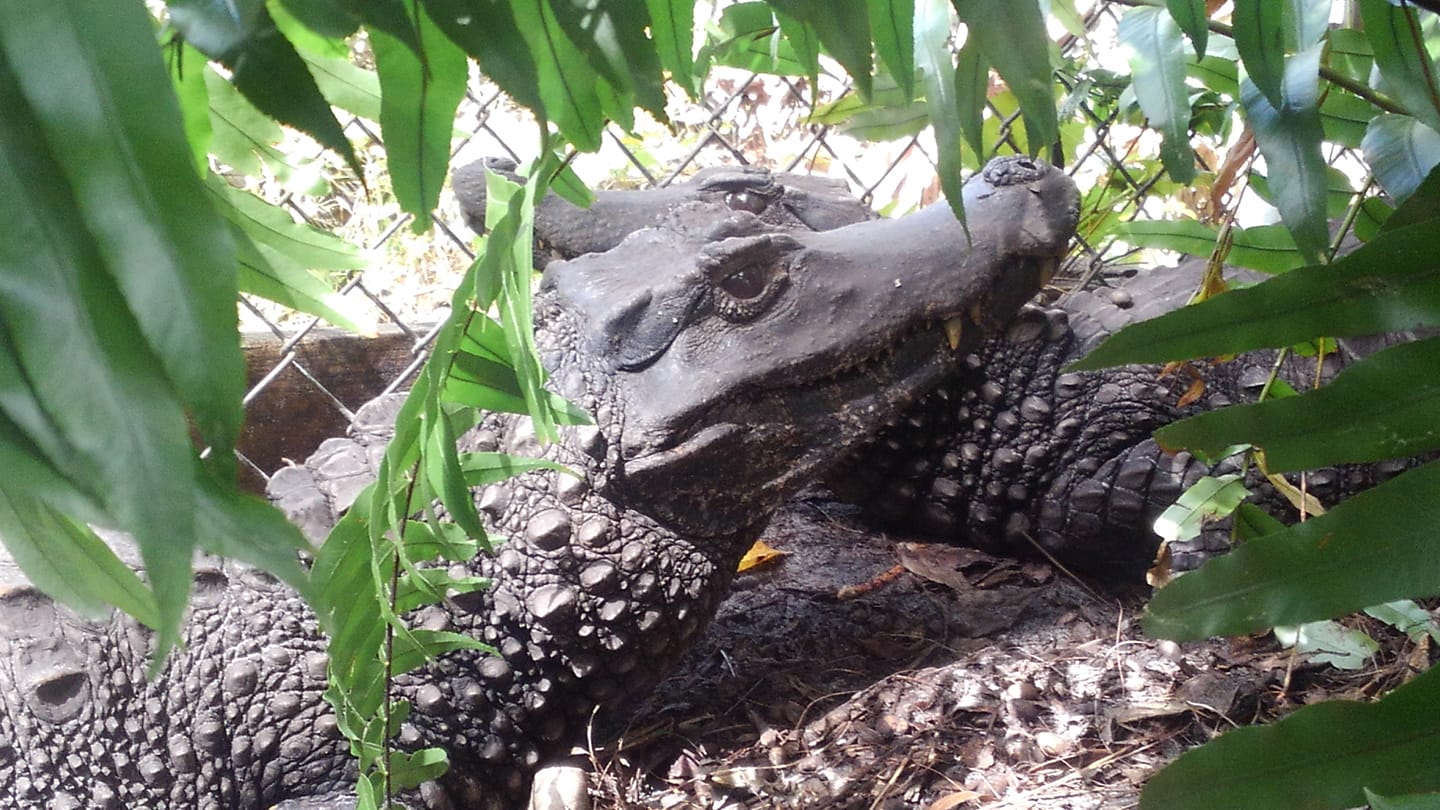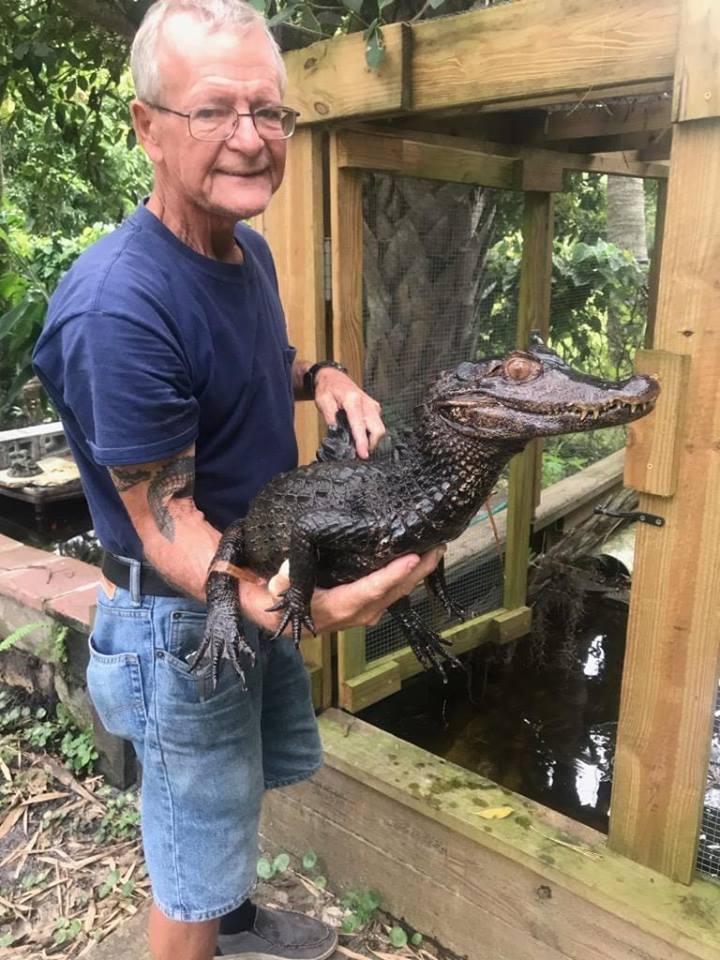The Crocodilians Crocodilia are found all across the Old and New World, and they share some basic features since they belong to the same phylu
The Crocodilians
Crocodilia are found all across the Old and New World, and they share some basic features since they belong to the same phylum. All Crocodilians have hard scaled osteoderms (or scales) that are made of bone down their streamlined bodies. This allows them to navigate semiaquatic habitats, defend themselves, thermoregulate, and withstand the harsh natural elements. All Crocodilians are carnivores, being ambush predators with powerful jaws and sharp teeth. All Crocodilians shed their teeth and regrow them over their lifetimes as a normal way to keep their mouths clean! Crocodilians all have nostrils and eyes on the tops of their heads, so they can navigate their watery worlds. Crocodilians are a prehistoric group of reptiles that include the alligators (and caimans), crocodiles, and gharials. Although these Crocodilians branch off into many specific subspecies and families that are unique, they share some remarkable qualities. Crocodilians are also a sister species to birds, and both of these groups are the only living members of the prehistoric group Archosauria, which include all extinct dinosaurs! There are 23 living species of Crocodilians, but there are many more (not mentioned here) that are extinct.
Crocodilia Classification
Within the Crocodilia phylum are many species of powerful predators, and their classification is always being debated. Three families are recognized in the Crocodilia phlyum including 1. Crocodiles (Crocodylidae), 2. Alligators (Alligatoridae), and 3. Gharials (Gavialidae). There are 14 species of crocodiles, eight species of alligator, six caiman species, and one species of gharial. See below for a summarized list:
Alligatoridae, Genus: Alligator
- The American alligator (Alligator mississippiensis) – endemic to the southeastern US
- The Chinese alligator (Alligator sinesis) – endemic to eastern China
Alligatoridae, Genus: Caimans
- Spectacled caiman (Caiman crocodilus)
- Broad snouted caiman (Caiman latirostris)
- JACARÉ Caiman (Caiman yacare)

Fred Grunwald, crocodile corner
The Scnieder's dwarf caiman is also known as the "smooth faced caiman" for the smooth patch on its snout.
Alligatoridae, Genus: Melanosuchus
- Black caiman (Melanosuchus niger)
- Cuviers dwarf caiman (Paleosuchus palpebrosus)
- Schnieder's dwarf caiman (Paleosuchus trigonatus)

fred grunwald, crocodile corner
The Cuviers dwarf caiman is the smallest Crocodilian species. Fred Grunwald is a private keeper in the United States dedicated to Crocodilian conservation.
Crocodylidae, Genus: Crocodylus
- American crocodile (Crocodylus acutus)
- Slender snouted crocodile (Crocodylus cataphractus)
- Orinoco crocodile (Crocodylus intermedius)
- Australian freshwater crocodile (Crocodylus johnstoni)
- Phillipine crocodile (Crocodylus mindorensis)
- Morelet's crocodile (Crocodylus moreletii)
- Nile crocodile (Crocodylus niloticus)
- New Guinea crocodile (Crocodylus novaeguineae)
- Mugger crocodile (Crocodylus palustris)
- Estuarine crocodile (Crocodylus porosus)
- Cuban crocodile (Crocodylus rhombifer)
- Siamese crocodile (Crocodylus siamensis)
- American dwarf crocodile (Osteolaemus tetraspis)
Crocodylidae, Genus: Tomistoma
- False gharial (Tomistoma schlegelii)
Ghavalidae, Genus: Gavialis
- Indian gharial (Gavialis gangeticus)
Crocodilian Blood Properties for Medicine
No matter what family or genus, Crocodilians are frequently living in bacteria-infested habitats and engaging in violent behaviors. Many species are territorial and will engage in bloody battles for their dominance and area. They could also get violent during predator-prey interactions too. Despite these common occurrences, Crocodilians rarely die from fatal infections by their wounds! But how can a reptile that lives in swampy, dirty waters, be so resistant to any infections? Scientists have been taking on this question and multiple scholarly research projects have focused on this fact. In a recent news story, a 2019 study found that (in the lab,) crocodile blood was 100 percent successful in killing 23 bacteria strains, some of which are responsible for fatal infections. This included samples from the Siamese crocodile (Crocodylus siamensis). Scientists used "crocodile serum" against 23 different bacteria strains and it was effective killing 23/23. This was compared to the "human serum" that only killed 8/23. It was also found that when crocodile blood was introduced to HIV infected cells, it was able to manipulate and stop the proper lifecycle of HIV. Although it was not able to prevent HIV from infecting healthy cells, it was able to stop the vital protein making process that goes along with changing the infected host's DNA. This research can be useful for the conservation of Crocodilians because it shows the need to preserve and learn more about these reptiles. Further understanding Crocodilians can lead to more captive conservation programs for the many endangered species within this group. Research on Crocodilian blood has also been useful for further understanding HIV, and has the potential to offer life saving drugs for deadly diseases in humans. With more awareness for Crocodilians, including understanding their place in human medicine, we can better preserve them through monitored captive programs!

